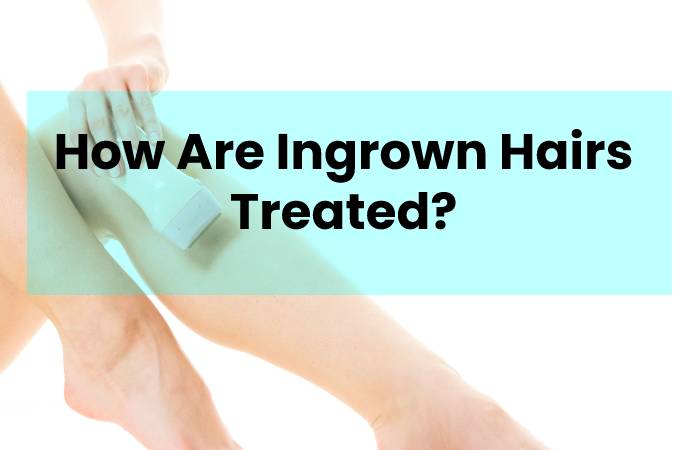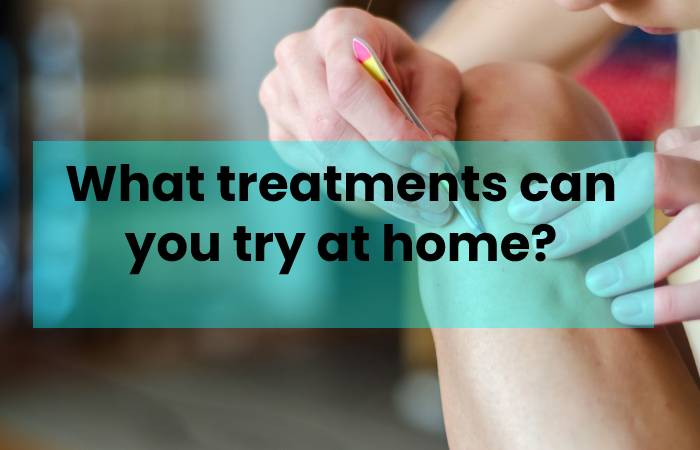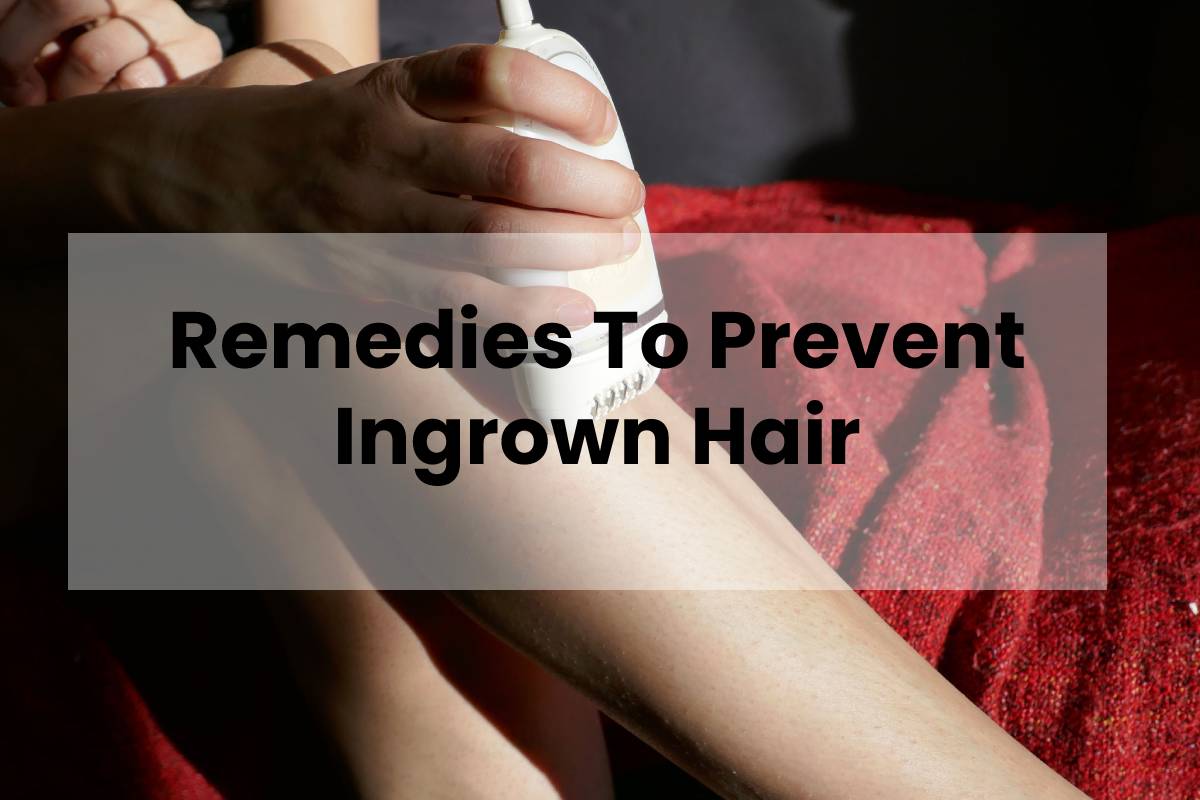Remedies To Prevent Ingrown Hair: You get ingrown hairs after your hair grows back into the skin in its place up to the surface. It can happen when hair has remained shaved, waxed, or plucked. When ingrown hair develops, you may notice a small. Round bumps are called papules or minor, pus-filled bumps called pustules.
Certain persons may be at a higher risk for ingrowing hairs. In some cases, the skin about the ingrown hair may become darker. It is known as hyperpigmentation. You may also knowledge pain or itching around the ingrown hair area.
For example, persons with thick, curly hair tend to grow ingrown hair more often than people with fine, thin hair. It is especially true with pubic hair, which tends to be coarser than the hair on the head or the rest of the body.
Table of Contents
What Causes Ingrown Hairs?
When you remove hair, it frequently grows back. Most hair shafts will produce up through the skin without causing any problems. Other hairs may develop underneath the skin. For example, the shortened hair can curl back and grow into your skin when you shave.
When hair raises back into the skin, the body replies to the hair as if it remained a foreign object. That’s when symptoms begin, with pain, itching, redness, or swelling. Since you’re interested, you may also read this article: 30th Birthday Photoshoot.
How Are Ingrown Hairs Treated?
In most cases, you don’t want to treat ingrown hairs. They’ll often clear up on their behavior. If the hairs don’t start to raise back up the skin, you may need to try one of the following treatment options.
1. Stop Removing The Hair In That Part
Stop waxing and shaving before plucking the hair in that part until the ingrown hair disappears. Continuing to cut will aggravate the sensitive area level more. Scratching or picking at the ingrowing hair will raise your discomfort. It could even be central to a skin infection or leave a scar.
2. Apply warm compresses
Place warm bandages on the area. You can also rub a rainy washcloth or soft toothbrush over the skin.
3. Gently pull out the hair
Once the hair arises above the skin, use sterile tweezers or a needle to pull it gently. Try not to pluck it out entirely until the area remains healed, or the skin will heal over the hair again. Don’t dig into your skin. Breaking finished your skin could reason an infection.
4. Remove dead skin
Gently wash, then exfoliate around the ingrown hair to assist the hair return to the skin’s surface. If that doesn’t require effort, your doctor might prescribe a drug to help dead skin cells slough off more quickly.
5. Use creams to reduce inflammation
If the ingrown hair is causing a lot of redness and irritation, your doctor may prescribe a steroid cream. This topical treatment can decrease swelling and annoyance in the hair.
6. Use retinoids
Retinoids, such as tretinoin, can speed up clearing of dead skin cells. They may also aid clear up dark skin patches from ingrown hair. You’ll need a medicine from your doctor for retinoids. Since you’re interested, you may also read this article: Words Starting With Epo
These medicines can cause dry skin. This medication is unsafe for the baby and can cause congenital disabilities. Don’t use any crops with retinoids if you’re pregnant.
What treatments can you try at home?
A few over-the-counter (OTC) and home medicines can relieve bumps and possibly prevent ingrown hairs. Here are a few to try.
OTC Remedies To Prevent Ingrown Hair:
- Exfoliate with salicylic acid or glycolic acid. These crops will help keep your hair follicles open so the hairs don’t get stuck again. Don’t use these crops if you already have ingrown hair because they could irritate the area.
- Use a benzoyl peroxide cream. This ingredient in OTC acne medicines can help dry up the affected area and reduce redness.
- A non-greasy moisturizer can eliminate dead skin cells, which often clog follicles and contribute to ingrown hairs.
Remedies To Prevent Ingrown Hair
The best way to prevent ingrown hair remains by not waxing, shaving, or plucking, but that’s not always practical. If you continue to groom your hair, follow these steps to prevent future ingrown hairs.
1. Prime The Pubic Area For Shaving
Treating the pubic region before exploiting a razor to shave may reduce your risk of ingrowing hair when the hair starts to grow back. Remedies To Prevent Ingrown Hair
First, wash down your skin with a mild soap. Rub on an oiling shave cream or shave gel or one that remains designed for sensitive areas. When you finish, dry the area thoroughly before putting on your underwear and pants. Since you’re interested, you may also read this article: Regular Eye Drops – Uses And Side Effects
2. Use A Single-Bladed Razor
Some razors remain designed to reduce the risk of impacted hairs. You can try one of these singular razors or buy a single-bladed razor. If your razor is numerous uses old, replace it with a fresh one. Dull blades don’t make clean, precise cuts and can increase your risk of ingrown hair.
3. Consider Laser Hair Removal
Though classy, laser hair removal is a long-lasting solution to ingrowing hairs. Laser hair removal removes hair deeper, damaging the hair follicle. In record cases, that prevents the hair from growing back. Remedies To Prevent Ingrown Hair
Laser hair removal requires several treatments over a few weeks and months, but the results are usually semi-permanent. Laser elimination isn’t as effective on blond or actual light-colored hair.
4. Look Into Non-Razor Hair Removal Options
Chemical hair removers remain an option, but they can irritate sensitive skin. Test the hair remover on a minor skin patch on another share of your body before using it on your pubic area. It should remain safe to use if you don’t react within 24 hours.
Some prescription creams reduce hair regrowth, mainly when you use them after laser or other hair removal treatments. Electrolysis is an enduring hair removal treatment. It uses an electrode to end the hair root. Like laser hair removal.
Electrolysis needs several treatments over a few weeks or months. Keep in mind that the skin in the genital area is much more sensitive than the skin on your arm or leg. Remedies To Prevent Ingrown Hair.
Conclusion:
Properly preparing for hair removal can also help prevent ingrown hairs. Ingrown Hair Prevention · Rub your face in a circular motion every day using a wet washcloth or an exfoliating scrub to tease out ingrown Hair. Beforehand shaving, wash the area thoroughly with a gentle soap.
Also read: Muconase Nasal Spray Review

